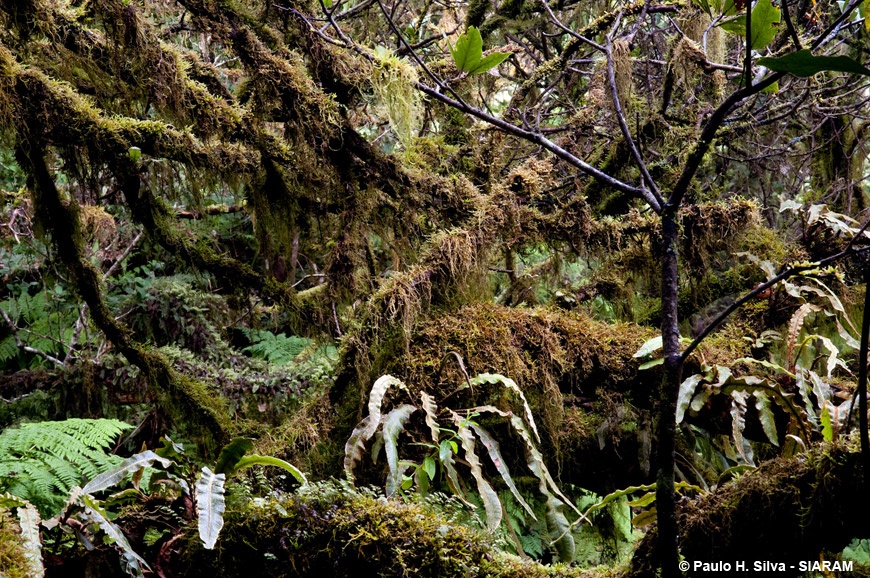[in bryophytes] … strength is mingled with humility, gentleness and charm,
with elemental essence, reflecting the gladness of wind, sun and rain.
John H. Bland (1970)
In this group we study and promote bryophytes in the Azores.
The team includes a senior resercher and additional help is provided by researchers working on different projects. The research activities of the group focus on the study of Ecology, Diversity and Conservation of Azorean bryophytes, and on their promotion.
Bryophytes (including mosses, liverworts and hornworts) are one of the most diverse and interesting taxonomic groups existing in the Azores. Although the nine islands represent only a small fraction of the European territory (0,02%!), they include about a quarter of all European species (25,5%), some of them Red Listed in Europe. All bryophyte species are not only beautiful to behold but they are excellent ecological and physiological models, providing an original contribution to knowledge and science.
Four questions direct the ongoing research:
- How many species are there in the Azores? What is their distribution across the islands? and accross habitats?
- What are the roles of bryophytes on ecosystem services?
- Which species could be used as accurate indicators of global change (climatic & land-use)? and
- How to improve nature conservation strategies in order to preserve the biodiversity of bryophytes?
The 'Azores Bryo Lab' group works to improve the knowledge on:
- The inventory of bryophytes (and lichens) in the Azores and all aspects of taxonomic and functional diversity;
- The distribution of bryophytes (and lichens) in the Azores, using a spatial scale of 500 m x 500 m (or lower), and an elevation step of 200 m;
- The quantification of ecosystem services performed by bryophytes (e.g. water holding capacity and carbon sink);
- The characterization of the responses of bryophytes to increased environmental stresses;
- Some macroecological patterns in islands (e.g. SADs, SARs, local-regional, diversity estimation) using bryophytes as model organisms

